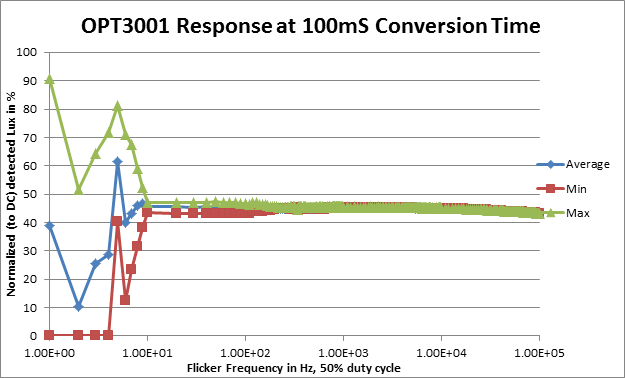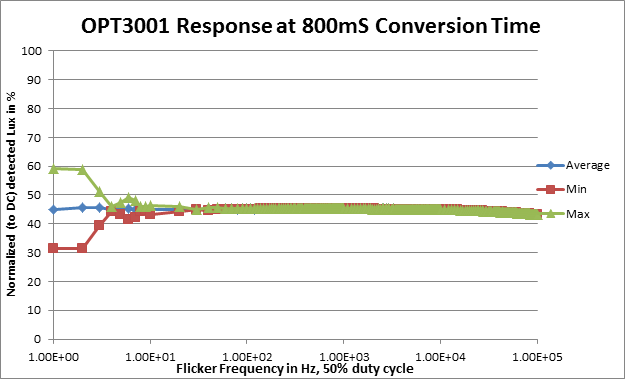Some modern LED lamps have significant flicker amplitude at frequencies in the hundreds to the kHz range. How does the OPT3001 perform under such flicker conditions?
The issue is of course that unless the analog signal from the light to current sensor is properly anti-alias filtered before reaching the ADC, the measurement can be very wrong. Note that it may not be of any help to increase the integration time - the aliased-down signal cannot be removed digitally. Nor does it help to integrate in a multiple of the flicker period, because the period is unknown and varying, as it is not necessarily locked to the 50/60Hz grid.
The datasheet has no mention of an anti-alias filter nor a sampling frequency. Can anyone comment on these issues?



